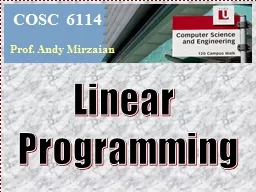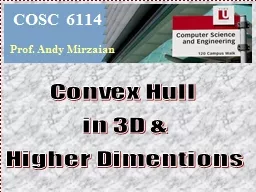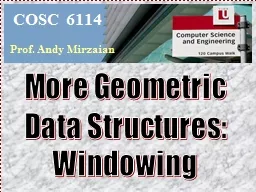PPT-COSC 3100
Author : kittie-lecroy | Published Date : 2015-11-13
Transform and Conquer Instructor Tanvir What is Transform and Conquer The 4 th algorithm design technique we are going to study Three major variations Instance
Presentation Embed Code
Download Presentation
Download Presentation The PPT/PDF document "COSC 3100" is the property of its rightful owner. Permission is granted to download and print the materials on this website for personal, non-commercial use only, and to display it on your personal computer provided you do not modify the materials and that you retain all copyright notices contained in the materials. By downloading content from our website, you accept the terms of this agreement.
COSC 3100: Transcript
Download Rules Of Document
"COSC 3100"The content belongs to its owner. You may download and print it for personal use, without modification, and keep all copyright notices. By downloading, you agree to these terms.
Related Documents














